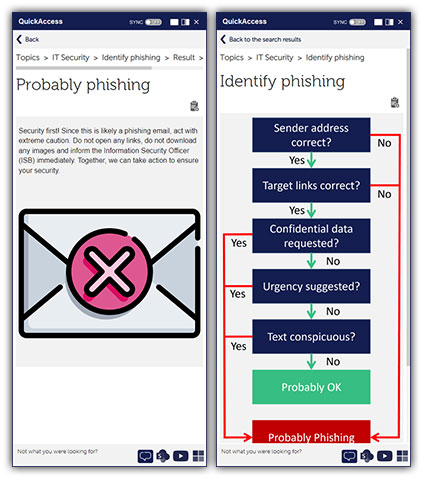How to Improve Your Compliance Learning
Show me similar content
Digital Adoption
1. Is todays truth tomorrows truth?
Managing ethics and compliance in a dynamic world is a challenge for all compliance officers. The impact of artificial intelligence, cybersecurity, and geopolitical events can change the E&C landscape overnight.
It is important to be aware of this dynamic reality and answer the question of whether what is considered truth or policy today will be valid tomorrow. Compliance learning must be flexible and adaptable to changing circumstances. In this context, it is essential to examine the various challenges that organizations may face and provide practical models to support implementation.
2. Is Ethics & Compliance the backbone of your organization?
As a compliance officer, it is essential to clarify the role of ethics and compliance in the organization. It creates awareness of the strategic importance of compliance in the corporate culture and enables training to focus on key factors. When E&C acts as a backbone, it not only influences adherence to legal standards, but also shapes corporate behavior, decision-making and reputation.
3. What is the business case for Ethics & Compliance in your organization?
Defining the business case for ethics and compliance in your organization allows you to align compliance training content with your company's strategic goals. It also increases employee understanding and buy-in. An effective E&C program can strengthen stakeholder trust, enhance reputation, and promote long-term financial stability, in addition to minimizing legal risk.
4. Who is responsible for Ethics & Compliance and its learning portfolio?
The focus and intensity of compliance training varies depending on who in the organization is responsible for ethics and compliance and the associated learning portfolio. For example, compliance officers will train on a high frequency of learning content. The business, on the other hand, tends to invest less time and resources in compliance training. Clarifying responsibilities is therefore critical to increasing the effectiveness of compliance training. Clear allocation of responsibilities ensures that a consistent strategic direction is maintained for all compliance training.
5. Who is the target audience for your compliance learning?
Clearly defining the audience for your compliance learning is critical to its effectiveness. Precise identification allows you to tailor training programs to meet the needs and knowledge levels of your target audience. For example, if your training is for auditors, it may focus on specific regulatory requirements and audit procedures, as well as legally compliant documentation of results. Employee training, on the other hand, requires a hands-on approach that is integrated into the day-to-day business of meeting the day-to-day challenges of compliance.
Going Beyond Traditional Compliance Training
Once these five questions have been answered, we come to another important point: traditional compliance training alone is no longer sufficient in an era where change happens at ever shorter intervals. The effort is high, the benefits are limited, and 80% of what is learned is forgotten after two weeks. In the long run, knowledge acquired through informal learning - i.e. learning directly at the workplace, integrated into everyday working life and through exchange with colleagues - is consolidated. But how can informal learning be encouraged?

Die Digital Adoption Platform (tts performance suite) zeigt, wie Mitarbeitenden mit potenziellen Phishing-E-Mails umgehen sollen.
There is special software that helps employees to behave in a compliant manner during their work. Digital adoption platforms (DAPs) recognize the context in which the employee is working and provide appropriate support and advice for the task at hand. Or they help them make the right decision. For example, if an employee receives a phishing email, the digital adoption platform displays the appropriate recognition features and helps the user identify it. At the same time, it provides instructions on what to do if they have inadvertently acted incorrectly. This minimizes damage by ensuring the right steps are taken immediately.
Together with the insights gained from answering the questions above, a digital adoption platform provides the ideal foundation for establishing compliance policies and regulations within the organization, while increasing employee efficiency by reducing the time spent on traditional training and searching for answers from colleagues.
About Marc Bakema
Marc Bakema is an experienced senior HR leader with a passion for developing both individuals and organizations. He is known for developing HR strategies that not only align with organizational goals, but also deliver tangible business value.
His proven track record includes driving impactful change journeys at the individual, team and organizational levels. His extensive experience in organizational development and learning enhances his ability to optimize and professionalize compliance learning portfolios. He is a catalyst for positive change, leaving a lasting impact on individuals and contributing significantly to the success of the organizations he works with.
Show me similar content
Digital Adoption




